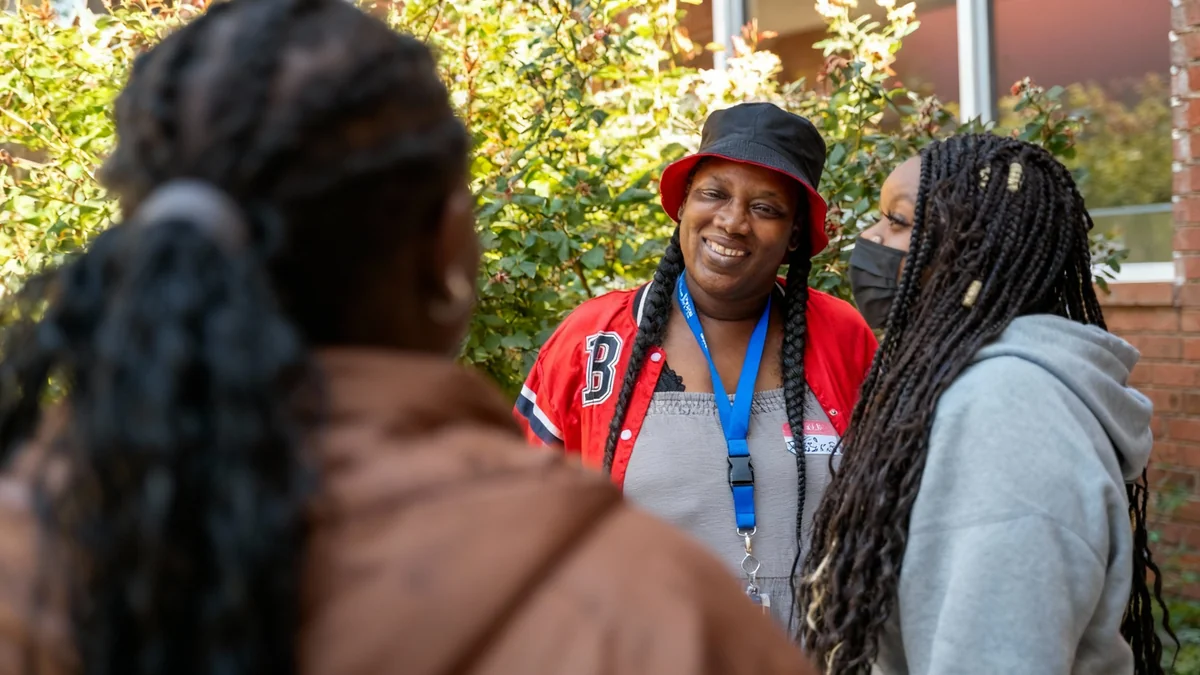In Sacramento, the journey out of homelessness is rarely a straight line. For many individuals and families, it is a difficult cycle of temporary fixes—from motel rooms and shelters to the backseat of a car—each with its own set of rules and limitations. This landscape of temporary housing highlights a complex system where stability remains just out of reach for the city's most vulnerable residents.
The experience of navigating this system is a story of resilience, but also one of profound daily challenges. Individuals are often forced to part with most of their possessions, adapt to communal living, and confront the uncertainty of where they will be next, all while trying to rebuild their lives from the ground up.
Key Takeaways
- Individuals entering Sacramento shelters are often restricted to what they can carry in two 27-gallon totes, forcing them to abandon many personal belongings.
- The path to stable housing is often fragmented, involving stays in motels, safe parking lots, tiny homes, and traditional shelters.
- Personal stories reveal that homelessness can stem from a combination of factors, including accidents, job loss, theft, and family disputes.
- Various local initiatives, including tiny home communities and county hotlines, provide different levels of support, but demand continues to challenge the system.
The 27-Gallon Limit: A Difficult First Step
For many facing homelessness in Sacramento, the first step toward shelter involves a difficult choice: what to keep and what to leave behind. A common rule in local shelters is a strict limit on personal belongings. New residents are typically allowed to bring only what can fit inside two 27-gallon plastic totes.
This regulation, while practical for managing space in crowded facilities, presents an immediate emotional and logistical hurdle. Imagine condensing a lifetime of possessions—clothing, keepsakes, important documents, and tools for work—into a space smaller than a standard moving box. This process is the first of many compromises for those entering the shelter system.
A System of Triage
Sacramento County offers several entry points for those seeking shelter. The 3-1-1 county hotline is a primary resource for accessing programs like "First Steps," which operates shelters and connects individuals with services. Other options include temporary overnight shelters, designated safe parking areas for people living in their vehicles, and limited motel vouchers.
Jessica Perkins, a 44-year-old mother of five, understands this reality well. Her family's two-decade struggle with housing instability has taken them through hotels, parks, and shelters across multiple states. After finally securing a spot in a Sacramento shelter, the limitations became clear. "Imagine having to move into a new space... and are told you can only bring what fits into two boxes," she explained, highlighting the stark reality of starting over with almost nothing.
A Series of Setbacks and Small Victories
The path that leads to a shelter's front door is often paved with unforeseen crises. For Tamiiraa Jackson and her daughter Caeli, homelessness arrived abruptly in December after a cascade of misfortunes.
"I got hurt in an accident, someone stole my vehicle, and then they stole the money that I had hidden," Jackson recounted. A back injury made it difficult for her to work and get around without a car. She and her daughter lived in a motel until their funds were depleted at the end of May, forcing them to rely on friends.
"That was stressful and uncomfortable. Especially because I’m used to taking care of everything by myself. I’m not used to asking for help."
Now residing at the First Steps shelter, Jackson is focused on securing permanent housing. The experience has prompted deep personal reflection on her priorities and her role as a mother. Her daughter, Caeli, hopes to soon move to a shelter for young adults where her brother is currently staying, illustrating how families are often separated by the system's structure.
The Human Cost of Instability
Jessica Perkins' journey illustrates the long-term impact of housing insecurity. After losing a stable home in Louisiana, her family cycled through temporary situations for a year before the state intervened, taking her children. She eventually reunited with them in Sacramento, but an eviction following a dispute with a neighbor sent them back into a pattern of living in hotels and their car.
Different Models of Shelter
Sacramento has implemented various models to address its homelessness crisis, each offering a different environment. Traditional shelters, like the one at the former McClellan Air Force Base, provide basic rooms with beds. These facilities offer a roof and safety but often come with strict rules and limited personal space.
A newer approach involves communities of tiny homes, such as the one located off Stockton Boulevard. These small, individual units provide residents with a private, lockable space, offering a greater sense of dignity and security than a communal bunkhouse. Inside, residents have space for personal food storage and a place to call their own.
Finding a Voice in a Tiny Home
It was at the Stockton Boulevard tiny home village where I met Tracy, a street singer known for her performances near Sacramento City College. For her, the tiny home isn't just shelter; it's a stable base from which she can continue to pursue her passion and connect with the community.
Having her own unit has provided Tracy with the stability needed to focus on more than just daily survival. The privacy and security of a tiny home can be a critical factor in helping individuals regain a sense of self and begin planning for the future.
The Unseen Journey to a Permanent Home
The stories of Jessica, Tamiiraa, and Tracy reveal that homelessness is not a monolithic experience. It is a deeply personal crisis, often triggered by events beyond an individual's control—an injury, a theft, a family conflict. The system designed to help, while providing essential safety nets, is a complex maze of temporary solutions.
While initiatives like tiny homes and comprehensive support services offer hope, the fundamental challenge remains: moving people from a state of temporary shelter to one of permanent, stable housing. For every person who finds a foothold, many others are still navigating the cycle, carrying their lives in two plastic totes and hoping the next step will be the one that finally leads home.





